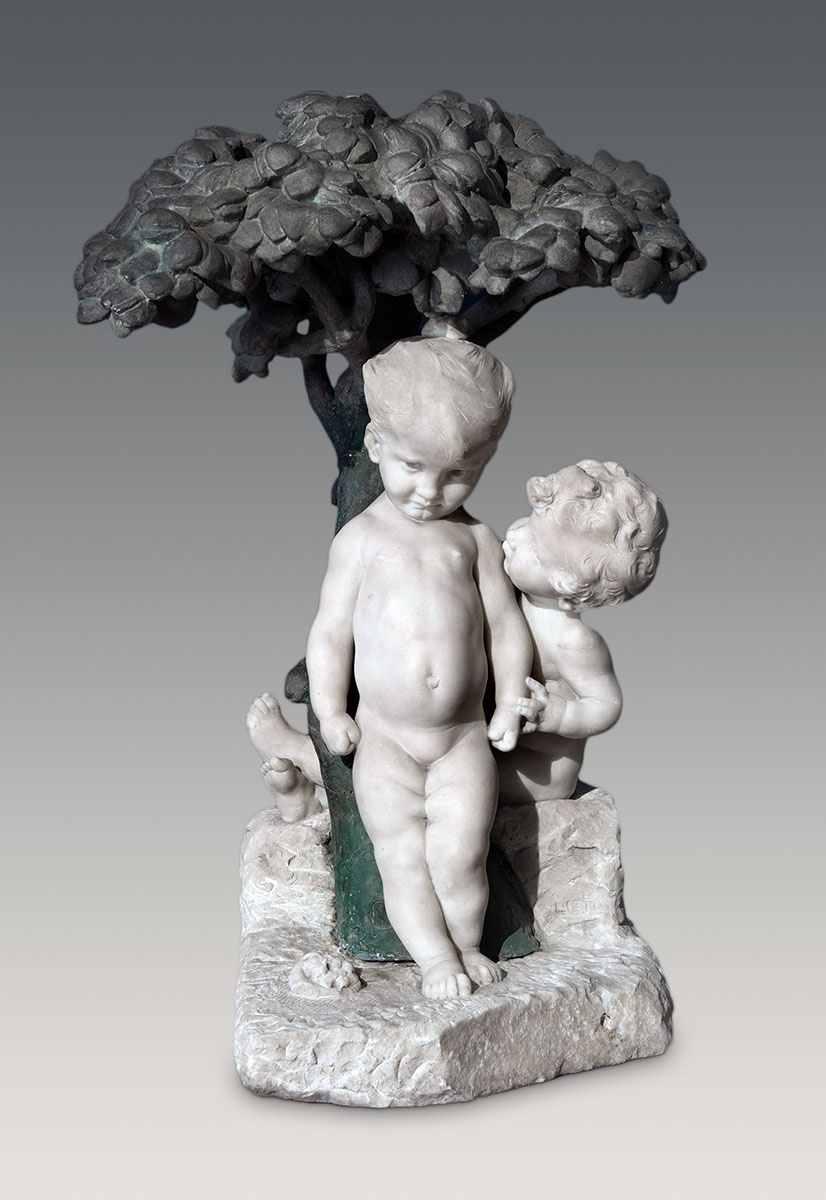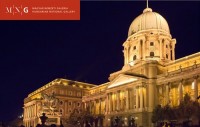Adam and Eve, Miklós Ligeti’s salon statue is a unique piece of the collection of the Hungarian National Gallery, with a function that forms a transition between fine and applied art. The hair of the marble children was originally painted and there used to be red glass fruits among the leaves of the bronze tree, with light bulbs inside, whose cables ran through the hollow trunk.The piece received a bronze medal at the 1900 Paris Exposition Universelle. This was one of several works in which Ligeti used a variety of materials and colours, a practice that followed the international tendencies at the end of the 19th century that sought to reflect on the variety of antique sculpture in the light of the new findings of archaeology. The design is not the only thing to make Adam and Eve a unique composition: its iconographic program is also unconventional, as it depicts the ancestors of humanity as children. According to some assumptions, Ligeti identified the period of paradisiacal innocence before the Fall with childhood.
en

